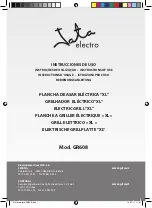
Fig. Adjusting bottom valves.
8.
EXAMPLES OF THE USE OF THE SOWNG CHART
8.1. General
Further on in the accompanying sowing chart in item 10 there are two examples of the use of the
sowing chart. Note that the seed quantity figures on the chart must be taken only as estimates. The
actual speed quantity depends on the seed qualities which vary yearly and by species considerably.
The speed quantity must be checked by means of a calibration test which is described later on.
Check the gear ratio of transmission before you start the sowing by removing the chain cover (at the
right end of the machine). Check the position of the spring cotter on the shaft (fig. 21). Never lock
the chain wheels simultaneously, because the transmission can be damaged.
-
By changing the position of the spring cotter you can choose the setting for normal seeds or
the setting for small seeds.
-
In setting for normal seeds the spring cotter is placed on the intermediate shaft. It locks the
22 toothed chain wheel while the 41 toothed chain wheel is rotating freely.
-
In setting for small seeds the spring cotter is placed on the feeding shaft. It locks the 41
toothed chain wheel while the 22 toothed chain wheel is rotating freely.
-
Check before you start sowing that the spring cotter is in its place.
8.2. Example of setting when sowing cereals
Case 1
You want to sow oats 200 kg/ha
-
Check in the upper right corner of the chart in item ‘cereal’ for correct position of the
bottom valves. The correct setting is position 2.
-
Choose delineator ‘oats’
-
Check the gear ratio which is to be I. Start reading from the left corner of the chart from
point 200 kg/ha
-
Follow the horizontal line (arrows) to the point where this line and the delineator ‘oats’
intersect
-
Go vertically from the intersecting point to the lower scale where you can see that the main
scale setting is 5 (turns)
-
From the scale next to te lowest (hand wheel scale) you get number 6













































